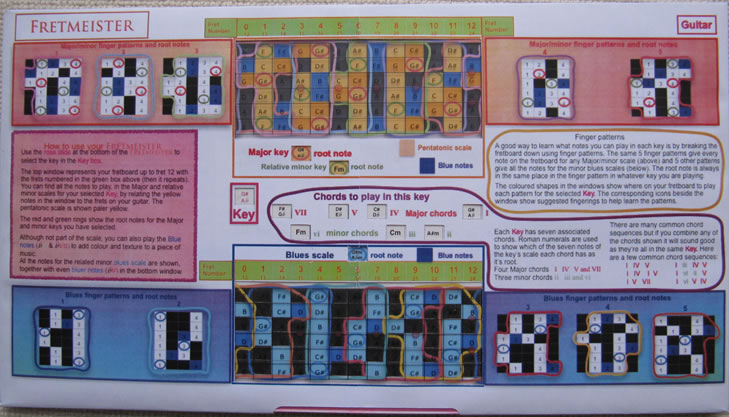History
After I had been playing baritone ukulele for about a year, I decided it was time to go a bit further than strumming the same 1st position chords.
I have always found it easiest to learn from visual aids and, although I got an excellent book with pages and pages of diagrams and detailed explanations, I struggle with learning from books (or screens) so I set about making myself something that would let me see a visual representation of all that information.
I have always found it easiest to learn from visual aids and, although I got an excellent book with pages and pages of diagrams and detailed explanations, I struggle with learning from books (or screens) so I set about making myself something that would let me see a visual representation of all that information.
Prototype Baritone Ukulele Fretmeister made with tracing paper and card
Initially, I just had notes that were OK to play (white) and notes to not play (black) which changed depending on which key I selected by sliding a see-through fretboard along the pattern of notes. Then I added the pentatonic scale and root notes which, I noticed, maintained the same pattern across all keys. Then I discovered finger patterns and realised that I could just add them and they would fit into the fixed pattern as well. It may look rough but it was a useful tool for me to take the next step in my playing.
When a friend came round (a guitarist who has been playing for many years), he saw it and said "That's brilliant, I want one". So I made him one for guitar.
Mark 2 Guitar Fretmeister printed on acetate and paper with internal slide and chords.
Other people also thought it was a good thing and, with feedback and suggestions from musical family members, friends and guitar shop managers, I simplified it and decided to go into production.
I hope this is the beginning of a long story
I hope this is the beginning of a long story
©Adam Rubinstein2017


